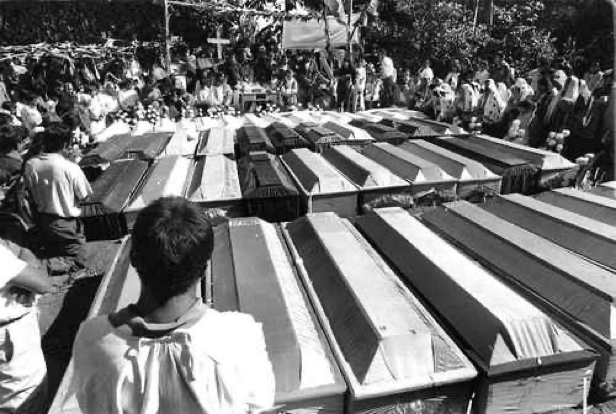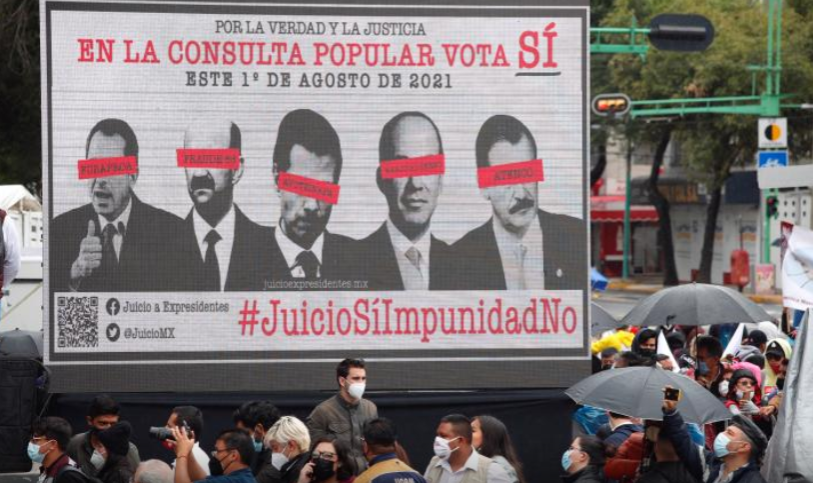Luis Hernández Navarro
The geography of Mexican horror reached its peak at the end of the 20th century. Atrocity became an everyday form of government. Terror established a new nomenclature. It was called Acteal and the North of Chiapas, Aguas Blancas, El Charco, and Los Loxichas.
The atrocities were also christended with the names of the victims. Like that of the teacher Magencio Abad Zeferino, an indigenous Nahua from the Olinalá region. He was tortured by soldiers in the final days of 1996. You are going to remember this. This is what we are going to do to your son, they told him, as they savagely beat him and gave him electric shocks. Because of this and other cases the National Commission for Human Rights issued the recommendation 100/97 on disappearance, torture and arbitrary detentions on the part of the Army in Guerrero (https://bit.ly/2UKXkNd).
Massacres, militarization, jailing, extrajudicial killings, torture, forced sterilization, police persecution were a constant for the last president to emerge from the ranks of the PRI in the last century, the prophet of neoliberal globalization: Ernesto Zedillo. The invisible genocide, as he was called by Channel 6 de Julio (https://bit.ly/2UA3ccb) and Hermann Bellinghausen (https://bit.ly/3kR1sG8).
Chiapas, Oaxaca and Guerrero, among other states, became the hunting grounds of the counterinsurgency. Fostered by the State, paramilitaries flourished like mushrooms in the rainy season. Dozens of army barracks were built in the most remote regions of the country. The soldiers barged in, overrunning indigenous communities. Women became the spoils of war.
Shamefully, public officials, armed forces and members of the National Commission on Human Rights denied the existence of the unspoken war that was being executed by paramilitaries. After all, they did not need to be accountable to anyone for their atrocities (https://bit.ly/3iFJwLL). They called them armed civilian groups. In Chiapas they were baptized with the most diverse names: Paz y Justicia (Peace and Justice), Opdic, Chinchulines, Primera Fuerza (First Force), Mascara Roja (Red Mask), and MIRA.
Between 1995 and 2000 alone, in the northern zone of Chiapas, Paz y Justicia murdered more than 100 indigenous choles, expelled 2,000 campesinos and their families from their communities, closed 45 Catholic temples, made attempts on the lives of the Bishops Samuel Ruíz and Raúl Vera, stole more than 3 thousand head of cattle, and raped 30 women (https://bit.ly/3kQbjfp).

The height of this offensive was the Acteal massacre, a crime of the State. On December 22nd, 1997 paramilitaries savagely murdered 45 displaced people belonging to the Las Abejas group, who were peacefully praying for peace in a chapel (https://bit.ly/3y410rR).
Outrage upon outrage, the massacres of Aguas Blancas, in June of 1995, at the hands of police, and that of El Charco, in June of 1998, at the hands of the Army, were very painful moments for the people of Guerrero. Mourning, impotence and rage prevailed. Mafia power linked to the military, officials, and local political bosses showed its most bloodthirsty face. In Aguas Blancas, 17 campesinos were murdered, in El Charco, 10 indigenous people and one UNAM student. It did not stop there. The communities were harassed, and more than a few leaders from both movements were disappeared or murdered.
Years later, now during the government of Felipe Calderon, starting with the disappearance and execution of Mixtec Raúl Lucas and Manuel Ponce in 2009, the list of regional indigenous leaders murdered mostly by criminal groups rose insanely, in what is a substitution of the counterinsurgency. (https://bit.ly/3kOpLED).
The full weight of the State (Zedillo dixit) fell upon the Zapotecs of San Agustín Loxicha, beginning at the end of August 1996. An Army of occupation was unleashed on the entire region. One after another, illegal arrests, tortures, 22 forced disappearances, clandestine executions, and illegal searches followed. More than 250 people, starting with municipal authorities, were initially detained by military and police, accused of belonging to or collaborating with the EPR. Hundreds of judicial files against indigenous people were fabricated.
Despite this carnage, intellectuals who benefited during the term of Zedillo from juicy contracts and enjoyed special treatment from the president, have wanted to present him as an apostle of democracy.

Not a single authority was tried for these crimes. At most, it cost Rubén Figuroa and Emilio Chuayffet their jobs. Impunity was the name of the game. Even worse, the past was not left behind. Without self-criticism, prominent figures of the Zedillo administration, like Esteban Moctezuma (Secretary of the Interior and of Social Development) and Olga Sánchez Cordero, in the Supreme Court of Justice of the Nation who was appointed by presidential coup to reform the Judicial Branch and name new ministers (https://bit.ly/2TB72Be), today occupy prominent posts.
Because of the horrors of Zedillo’s regime, and because of all the other horrors experienced throughout the last half a century, it is important to participate in the consultation of August 1st with the victims in mind. To turn it into a mobilization in favor of a Truth and Justice Commission which will clarify the multitude of wrongs committed by people in power, against those who struggle and resist.
This article was published in La Jornada on July 27th, 2021. https://www.jornada.com.mx/2021/07/27/opinion/017a1pol
This English interpretation has been re-published by Schools for Chiapas.
